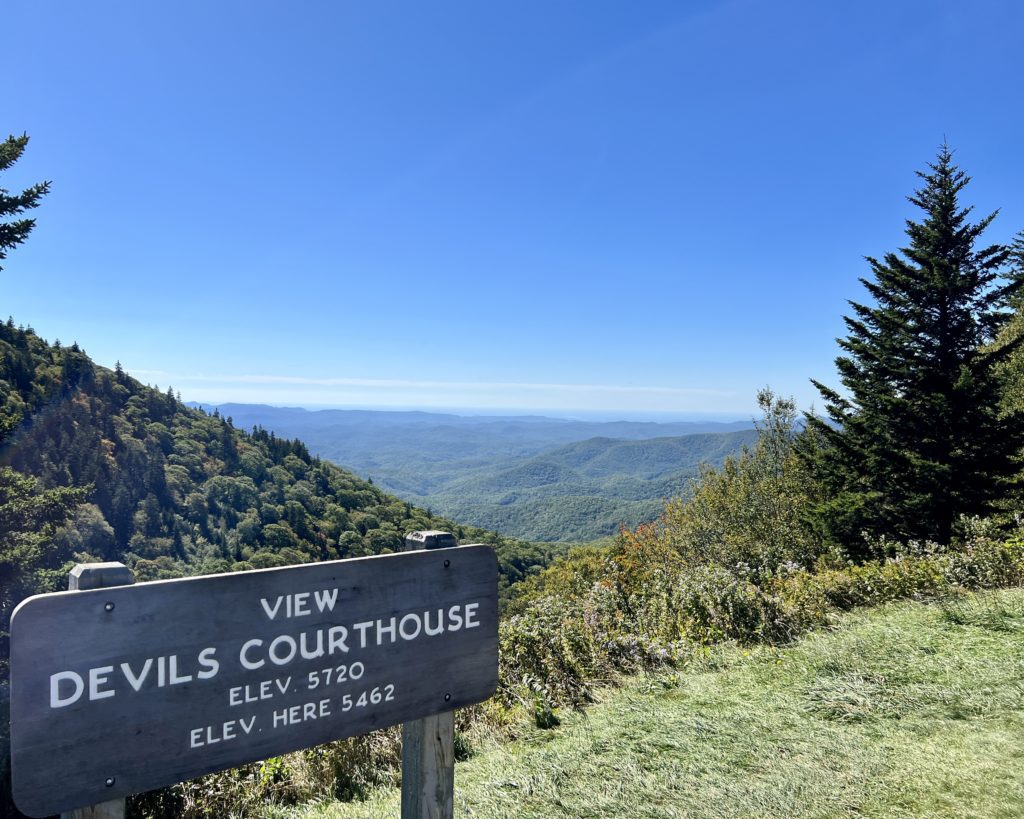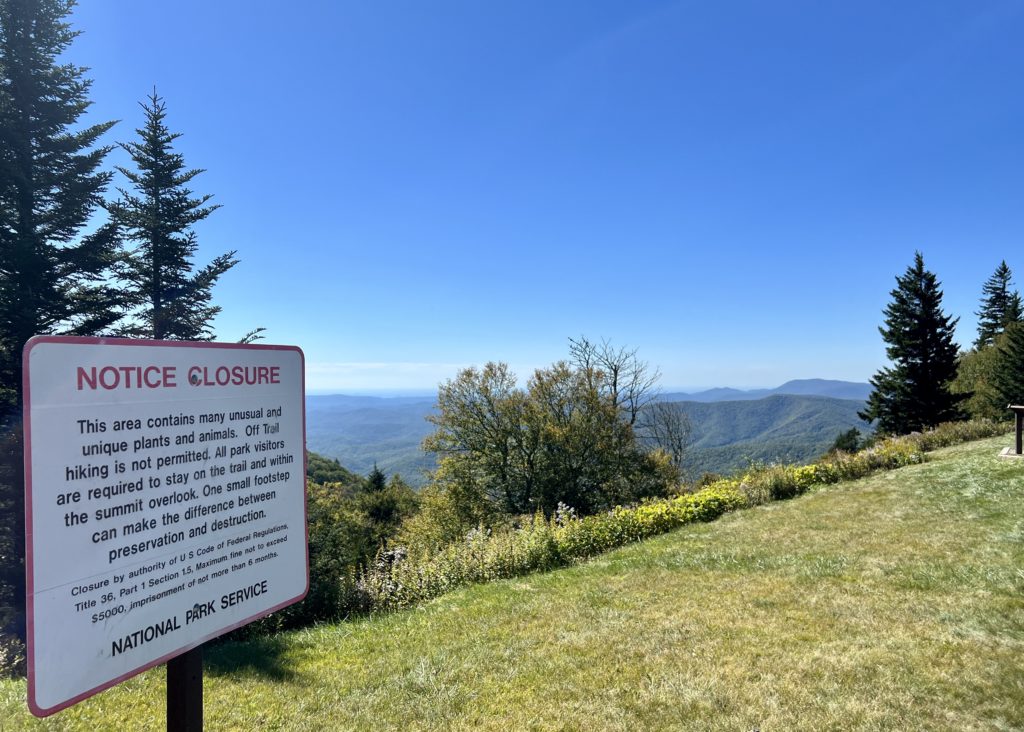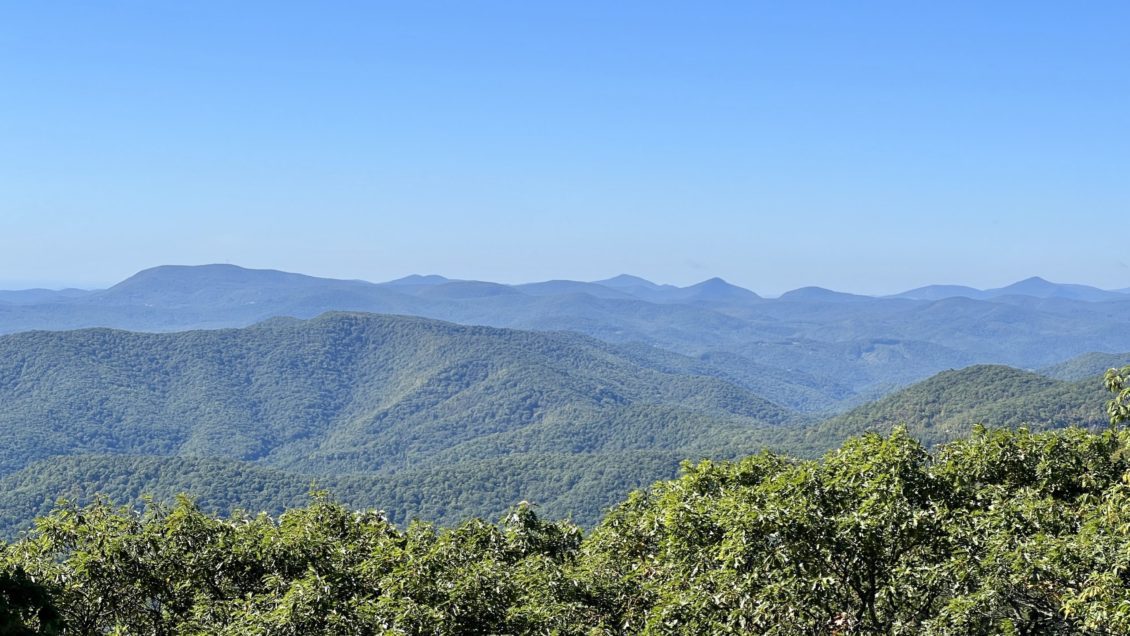It may seem obvious, but the first prerequisite for leaves to turn brilliant fall colors is for them to still be attached to trees when cool autumn weather finally arrives.
So far, so good.
Now, having reached that checkpoint and with the autumnal palette starting to peek through, those leaves just need to hold on a little longer — and potentially weather a big storm — according to Clemson University forest ecologist Don Hagan.
Marking a decade making fall foliage predictions for Clemson as he stood at the edge of Pisgah National Forest at an elevation of almost 5,500 feet the first week of fall, Hagan pointed to the weather during the transition from summer to fall as the primary factor in the quality and progression of color in the southern Appalachians this year.
And with Hurricane Ian bearing down on Florida’s Gulf Coast as fall began, the forecast looks even more precarious than usual.
“A little bit of drought stress coming out of summer — not a true drought, but a little bit of stress — helped kick off the early fall color that we’re seeing this year,” said Hagan, as associate professor in Clemson’s Department of Forestry and Environment Conservation. “But what you don’t want to see early in the season, especially as leaves start to turn and you start to get a little bit of color and they start to get a little bit loose; you don’t want a severe wind event. So, we always keep an eye on tropical systems this time of year.”
Of course, Ian’s winds will lose some of their steam before making it to the mountains from the coast, but even 40-50 mile per hour winds could blow some — maybe even most — of those leaves off their trees and put a serious damper on fall color season before it even begins.
But as Hagan explained, because the color change has already begun at higher elevations — above the magical 5,000-foot mark where the first fall hues start to emerge — Hurricane Ian isn’t likely to spoil the season for fall leaf-seekers.
“I don’t think at lower elevations it’s something we have to worry about this year,” he said.

Hagan noted that, at the elevation from where he was speaking, the trees still had a full set of leaves as fall began, meaning the next few weeks of weather would be crucial — with a series of mild, sunny cold fronts being ideal — to the color-changing process.
“That’s going to bring out the vibrancy in some of those colors, especially the reds and purples that you’ll sometimes see,” He said. “Those conditions are ideal. A lot of wind or rain or cloudy conditions, that’s what we don’t want to see.”
Standing at an elevation of nearly 5,500 feet near Devil’s Courthouse mountain about 10 miles northwest of Brevard, North Carolina, Hagan noted that nearly all the trees above him were evergreen trees, predominantly red spruce and Fraser firs, which don’t change color.
“But as you get below that elevation — that 5,000- to 4,000-foot range — that band of elevation is predominantly deciduous trees,” Hagan said. “We have this amazing diversity of deciduous trees here — from cherries to maples to birches to beeches to a bunch of different species of oaks.”
Many of those species exist only in the southern Appalachians; they are not found anywhere else in the world. And because those species are deciduous, their leaves are temporary investments — once they change colors, they’ve done their job for the year.
“So, that color change you see in the fall is really that tree saying, ‘OK, I’m going to hang it up for the year. I’m going to stop investing in these leaves,’” Hagan said. “And when they stop investing in those leaves and stop investing in that chlorophyll, the green color goes away and it reveals some of those other pigments, like the yellows and the oranges, that were always present but not visible previous to that.”
Yellow-poplars and birches, for example, are species notorious for sensitivity to drought stress. When species such as those that comprise an abundant part of the canopy begin to drop their leaves before summer ends, it puts a ceiling, or cap of sorts, on the potential of the fall color season.

So, while Hagan said some drought stress was visible, it wasn’t severe enough to compromise the potential for a full spectrum of colors this fall and, in fact, had been just enough to potentially bring out their best.
“That sunny weather is really the key, because that’s what brings out those red colors. That red color is a pigment that is not actually normally present in the leaf; it’s brought out in response to the stress that these trees are under at this time of year,” Hagan added.
For those trying to plan their fall foliage viewing trip for this season, Hagan said a good rule of thumb is that fall color moves downhill — or down the mountain, as it were — at about 1,000 feet per week, starting right about now.
“That can vary a bit depending on the weather that you have. Here, at these high elevations along the Blue Ridge Parkway, those first couple weeks of October even through the middle of October should be really good for fall color,” Hagan said. “We may have a little bit earlier peak this year at this elevation than we would normally have. But for fall color in the Upstate — along S.C. Highway 11 and near Lake Jocassee — realistically you’re looking at early November before you see your best colors there.
“But there’s much that remains to be seen, and much of it depends on this weather that we get in the coming weeks.”
Get in touch and we will connect you with the author or another expert.
Or email us at news@clemson.edu

